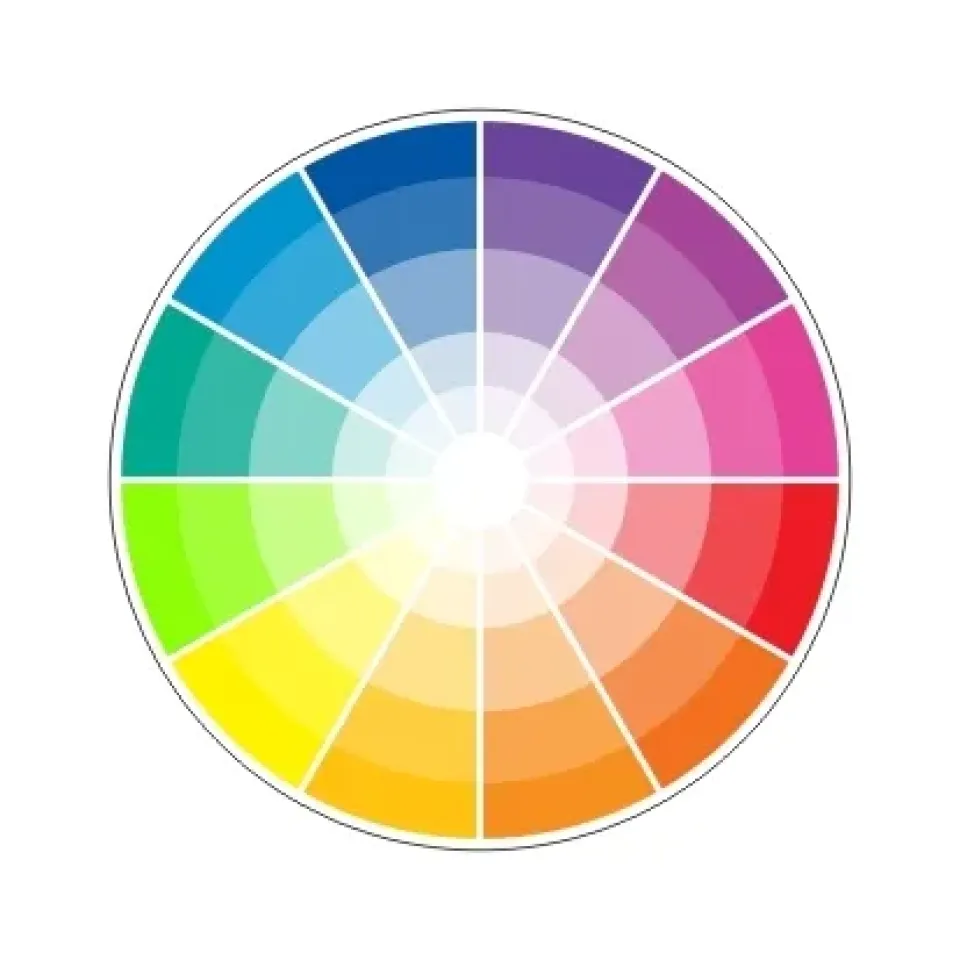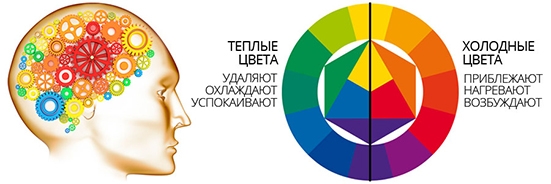
History and meaning of colors
History and meaning of colors
Color is an inseparable part of human life from birth. The power of color significantly affects a person’s life and thinking, developing his imagination and taste preferences. Thanks to the perseverance and work of archaeologists and historians, the development of advanced technologies that help reconstruct the history of mankind, we can find out what role color played in the lives of people who lived on the planet tens of thousands of years ago. Studies show that during the Stone Age, the color system of people consisted of three colors: red, black and white.
This “triad of colors”, according to Victor Turner, an English ethnographer and anthropologist, had a “symbolic and magical meaning” for people not only of the Stone Age, but also for many other nationalities. In ancient tribes, who have preserved their traditions and old way of life to this day, this “triad of colors” plays an equally important role. Having studied the culture of the African Ndembu tribe, Turner came to the conclusion that in all their numerous rituals and ceremonies related to obtaining and preparing food, giving birth to a child, and healing methods, they use color as a magical element. Red meant blood, food (meat), health, joy, life. White is a symbol of goodness, food (vegetable), power, purity, generosity, and hunting courage. Black meant death, evil, failure, witchcraft, and was also associated with the concept of love and marriage. The supremacy of the symbolism of red, white, and black colors in African tribes with a primitive communal organization is observed even in our time [2].
The range of colors expanded due to the development of human worldview. If the ternary color classification corresponded to savagery and barbarism, then the quaternary classification spoke of a higher level of development of the people. North American Indians (Cherokee) distinguished four colors: red, black, white and blue.
They associated with each side of the world the colors that characterized their social status: south — white (happiness and peace), east — red (solemnity and success), west — black (death), and north — blue (defeat) [2].
Among the peoples of the ancient East (China, India), the “cosmopolitan” number becomes — five. Their color system corresponded to the seasons, substances, celestial bodies, and mythical animals. In the system of ancient China, there were green-blue, red, yellow, white, and black colors. For example, in ancient China, red meant “summer–fire–south–Mars–Phoenix,” yellow — “end of summer–earth–center–Saturn,” green-blue characterized “spring–tree–east–Jupiter–Dragon.” White symbolized “autumn-metal-west-Venus-Tiger”, and black — “winter-water-north-Mercury-Turtle and Snake” [2]. Equating color with nature, weather phenomena, the surrounding world, ancient peoples gave color an important vital role, finding in it a source of knowledge and strength.
In the Renaissance, Leonardo da Vinci became the creator of a new color system.
The great artist distinguished six colors: red, yellow, green, blue, white and black. These colors not only made up the palette of the painter himself, but also symbolized the variety of colors and shades in nature, which were reduced to the colors chosen by da Vinci. But thanks to the discoveries of science, the activities and research of scientists, the spectrum of colors was enriched with new colors. One of the important achievements in the science of colors was made by Isaac Newton, who developed a new theory of color, expanding the color wheel to include purple, orange, and blue [2]. Further research by scientists revealed new shades and colors, but the main ones in their color systems remained red, green, yellow, orange, blue, blue, and violet. The study of color was also carried out by people who had no direct connection with natural science, for example, the author of the tragedy "Faust" and "The Sorrows of Young Werther" Johann Goethe (treatise "The Doctrine of Color") and the "philosopher of pessimism" Arthur Schopenhauer ("On Vision and Colors"). Thus, color became a subject of study not only in the field of natural science, but also in philosophical and literary activity.
In connection with the rapid development of psychology in the 20th century, psychologists came to the conclusion that the choice of color can help in diagnosing the psychological and physical state of a person. It is this method of knowing a person through the color that he prefers or which he tends to reject that began to be used by psychologists and psychotherapists for a deeper understanding of a person. In the book “Psychology of Color” M. Nelyubova notes that the color chosen by a person characterizes his current state.

The color that a person neglects carries information about the reasons that prompt him to make mistakes [3]. For example, blue, which, according to research by YouGov, is the most favorite color in the world, has the properties to stabilize the human nervous system, extinguish emotions; promotes recovery from nervous overstrain. This color symbolizes organization, strength of spirit, idealism, rigor and steadfastness. People who prefer this color strive to order and systematize everything. Psychologists claim that people who experience stress reject blue, and vice versa, it is most often chosen by those who are tired of tension and in search of harmony with the world around them. Blue distinguishes people who are loyal and faithful, but sometimes, this form of devotion can grow into fanaticism in them. According to the interpretation of colors in Max Luscher's color selection method, blue, in its negative aspect, characterizes alienation, coldness, lack of emotions and unfriendliness. Johann Goethe wrote in his treatise "The Doctrine of Color" that "rooms decorated exclusively in blue seem quite spacious, but, in essence, empty and cold." Goethe gave the color blue a shade of coldness, otherworldliness and longing [1]. However, blue also has medicinal properties: it has a healing effect on a person in case of hysteria, neurosis and insomnia.
Green represents stability and progress, symbolizes prosperity and new beginnings. People who prefer green are distinguished by high efficiency, the ability to weigh all the pros and cons and are willing to help other people. However, these people tend to hide their own world from others.
Green, if you look at it for a long time, causes boredom and drowsiness, so green color therapy is used to eliminate shock and stress. Green color is especially helpful for people suffering from claustrophobia. This color helps to concentrate and make decisions. In a negative aspect, green symbolizes stagnation and passivity.
Yellow is considered the color of joy and appetite. Often, cafes and restaurants use furniture or decor in yellow, because this color is able to awaken the appetite. Yellow characterizes originality, joy, cheerful mood and freedom. This color helps to overcome difficulties, promotes concentration. People who prefer yellow are characterized by high self-esteem, self-confidence and intelligence. Yellow gives self-confidence, relieves a person of shyness and thoughts that he is not good enough to achieve something in life. Like any other color, yellow has negative properties. For example, it is called the color of gossip. This is the color of intolerance, criticism, sarcasm and a tendency to judge others. The yellow color began to take on this meaning in the late Middle Ages: in those days, this color symbolized betrayal, sin, treachery and corruption, because the yellow color was associated with the image of Judas Iscariot, who was dressed in a yellow cloak. In Arabic, the “yellow smile” symbolizes insincerity, and in French the expression “yellow laughter” has the meaning of insincere and artificial laughter. For medicinal purposes, the yellow color is used as a medicine against melancholy.
The purple color, according to the Luscher method, in a positive aspect characterizes spirituality, truth and quality. People who prefer the purple color are able to completely surrender to their feelings, in other words, purple is the color of romantics. However, from another point of view, the purple color is the color of fear, decadence and the fading of life. This color is preferred by people who rationally evaluate feelings and emotions, critically look at their own behavior and are distinguished by extreme pedantry. In terms of healing properties, the purple color is recommended for people with vegetative-vascular dystonia and astheno-neurotic syndrome, because this color is able to eliminate feelings of panic and anxiety.
According to psychologists, blue is more often preferred by those who like to relax and rest. It is the color of dreams, fantasies, and security. The “calm emotionality” of this color helps to relax and daydream, but not to tune in and focus on serious work [3]. Also, according to chromotherapy (color therapy), blue has a beneficial effect on people suffering from inflammatory processes: bronchitis or allergic cough, and also reduces tension and soothes. Red is the color of leadership, perseverance, perseverance, and dynamism. People who prefer this color are prone to impulsive actions: they are passionate, active, and turbulent people who are ready to sweep away everything in their path to achieve their goal.
Red is considered stimulating because it promotes activity, sociability, confidence, determination, and optimism. In Roman mythology, the red color corresponded to the god of war Mars, so this color also means aggression, destruction and intolerance. In chromotherapy, the red color has the property of increasing immunity, accelerating blood circulation, increasing metabolism and muscle strength.
The orange color characterizes inexhaustible energy, strength, freedom-loving, creative potential; it encourages travel and self-knowledge. This color always has a beneficial effect on human life, as it inspires optimism and shows the joyful sides of life. In Indian culture, the orange color is a symbol of the sun, humility and renunciation of worldly goods; and today the orange color has become the official color of Buddhism. The orange color is a high-quality antidepressant: it promotes the appearance of a good mood, causes a feeling of celebration and cheerful mood. Improves memory, increases mental activity, reduces the feeling of drowsiness and fatigue.
Thus, each color has its own special meaning and influence on human life. The history of the study of color gives us an idea of the worldview of the people of the ancient world and how the color system developed over many centuries. Thanks to the culture of ancient peoples, the studies of scientists, researchers and psychologists, who made color something more valuable and important for human perception, we learn through color to know ourselves, understand other people and the world around us.
List of used literature: 1. Month S.V. Johann Wolfgang Goethe and his teachings about color (part one) / S.V. Month. - M .: Krut, 2012. - xxxii + 464 p. 2. Mironova L.M. Color in the fine arts: A guide for teachers. - 3rd ed. / L.M. Mironova. - Mn .: Belarus, 2005. - 151 p.: with illustrations. 3. Nelyubova M.V. Psychology of color (Author's course of lectures) / M.V. Nelyubova. [Electronic resource] / URL: https://www.videoton.ru/Articles/pshiho_color.html (date of access: 08.02.17)







